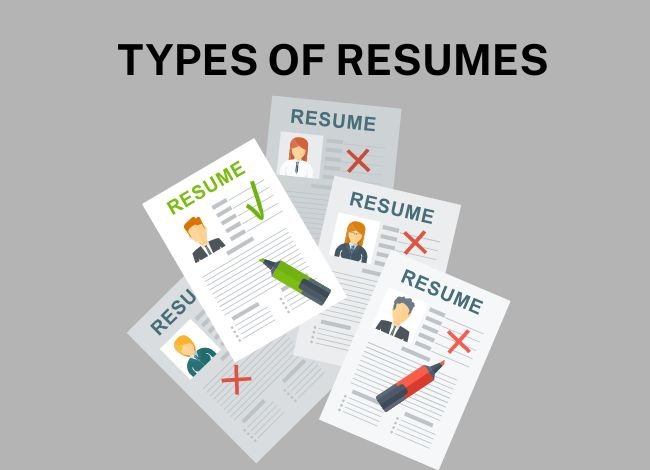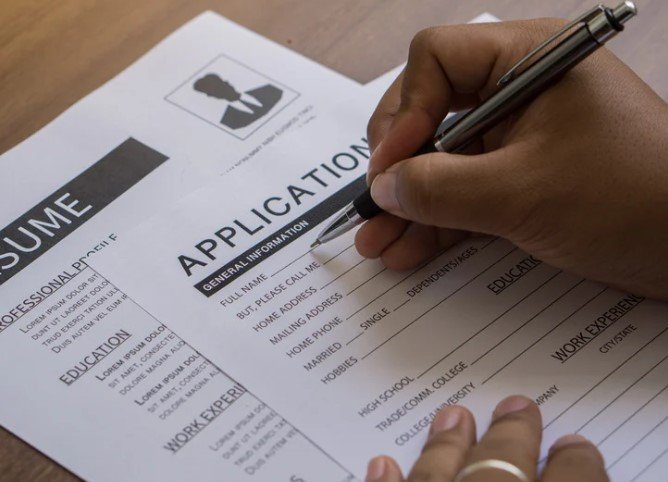Last Updated on October 15, 2025
The Least You Need to Know About Writing a Resume
When starting a job search, the resume is your most powerful tool. It is often the very first document a recruiter or hiring manager sees, and in many cases, it determines whether you will even be considered for an interview. According to standard resume writing guidelines, the most important thing to remember is that a resume is not just a history of your employment—it is a carefully crafted marketing document designed to present you as the best candidate for the role.
At the very least, you need to know that your resume must be clear, concise, and relevant. Recruiters spend only a few seconds scanning each resume. If yours is cluttered, overly detailed, or poorly formatted, it will likely be dismissed before anyone reads past the first line. This is why simplicity and precision matter more than length.
A well-written resume focuses on relevance. Every job, skill, or achievement included should connect directly to the role you’re applying for. If you’re changing careers or applying to a highly specialized field, tailor your content to highlight transferable skills and relevant experiences.
Another crucial point is customization. A generic resume sent to multiple employers rarely works. Instead, align your resume with the exact requirements of the job description. This involves choosing the right keywords, emphasizing the skills the employer values most, and presenting accomplishments that show measurable results.
In short, the least you need to know about resume writing is this:
- Keep it short but powerful.
- Tailor it to the job.
- Make sure it’s easy to read.
- Present yourself as a solution to the employer’s problem.
By keeping these fundamentals in mind, you ensure that your resume doesn’t just list your past—it creates opportunities for your future.
Types of Resumes
One of the most important decisions you make in resume writing is choosing the format that best represents your background. According to resume writing guidelines, the structure you use should highlight your strongest qualifications while making it easy for hiring managers to see why you’re a good fit. Not all resumes are created equal—different formats serve different purposes depending on your career path, experience, and goals.

Chronological Resume
The chronological resume is the most widely used and widely accepted format. It presents your work history in reverse chronological order, meaning your most recent job comes first. This style is especially effective for candidates who have a stable work history and want to show steady career growth.
Employers prefer chronological resumes because they clearly show job titles, companies, and dates of employment. For example, if you’ve worked five years as a marketing manager after being promoted from an assistant role, a chronological resume makes that progression obvious. It tells the story of your career path in a straightforward way, which recruiters often find reassuring.
However, this style may not be the best fit for everyone. If you have employment gaps or frequently changed jobs, a chronological format may draw unwanted attention to those gaps.
Skills-based Resume
The skills-based resume, also known as the functional resume, focuses on abilities rather than job history. Instead of leading with past positions, it highlights categories of skills such as “Project Management,” “Data Analysis,” or “Customer Relations.”
This type of resume is particularly useful for:
Job seekers changing industries
Candidates with limited formal work experience
Professionals with large employment gaps
For instance, if you are a teacher transitioning into corporate training, you may not have direct “corporate” experience. But a skills-based resume allows you to highlight transferable skills such as curriculum design, leadership, and presentation, which are relevant to the new role.
The drawback, however, is that some employers and Applicant Tracking Systems (ATS) find functional resumes harder to scan. Recruiters sometimes see them as attempts to hide limited experience, so you need to use this style carefully.
Combined Resume
The combined resume (sometimes called a hybrid resume) merges the strengths of both chronological and functional formats. It typically begins with a skills summary at the top, followed by a detailed work history in chronological order.
This format works well if you want to emphasize both skills and experience. For example, a software engineer who has mastered programming languages, project management, and leadership might first list those abilities under “Core Competencies” before presenting detailed job history.
The combined format is versatile—it gives employers an overview of your abilities while still showing when and where you developed them. For many modern job seekers, this balance makes the hybrid approach the most effective option.
Choosing the Right Resume Type
The key guideline here is simple: choose the format that highlights your strengths and minimizes weaknesses. If you have a steady career path, go chronological. If you’re switching careers or re-entering the workforce, consider functional. If you want the best of both worlds, the combined resume often works best.
Remember, a resume is not one-size-fits-all. The type you choose should depend on both your background and the expectations of the industry you’re targeting. By selecting the right format, you ensure your resume tells the story recruiters want to hear.
Sections to Include
A resume is more than just a summary of your professional history—it is a carefully structured document designed to communicate your value in the most efficient way possible. Resume writing guidelines emphasize that certain sections are absolutely necessary, while others can be included to strengthen your application if relevant. The order and emphasis of these sections may vary depending on your background and the job you are targeting, but the core principles remain the same. 
Required Sections
The backbone of every resume lies in its essential sections. These are the non-negotiable elements that recruiters expect to see.
Contact Information
At the very top of your resume, provide your full name, phone number, professional email address, and, when appropriate, a link to your LinkedIn profile or professional portfolio. Avoid using outdated contact details or unprofessional email addresses, as these small details can create a poor first impression.
Professional Summary or Objective
This is a short paragraph, usually two to four sentences, placed right after your contact information. It serves as your introduction and should highlight your career goals, experience, and key qualifications. A summary works best for experienced professionals, while an objective may be more suitable for entry-level candidates or career changers. Regardless of which you choose, this section should be concise and tailored to the role you are applying for.
Work Experience
This section carries the most weight in most resumes. It should be presented in reverse chronological order, starting with your most recent job. For each position, include your job title, employer, location, and dates of employment, followed by a brief description of your responsibilities and accomplishments. Keep the focus on achievements rather than routine duties, and whenever possible, use numbers to demonstrate measurable impact.
Education
Your education section should list your degrees, certifications, or relevant coursework. For recent graduates, education may appear near the top of the resume to emphasize academic achievements. For seasoned professionals, it usually appears after work experience. Include the institution name, degree earned, major, and graduation year (if it is recent). If you have multiple degrees, list them in reverse chronological order.
Skills
This section highlights specific abilities that are directly relevant to the job. Examples include technical skills such as proficiency in software, programming languages, or tools, as well as soft skills like communication, leadership, or problem-solving. Keep this section concise but impactful, using keywords that align with the job description.
Optional Sections
Optional sections can set you apart from other candidates, but they should be used strategically. They are not mandatory, but when included, they must add genuine value.
Certifications and Licenses
In industries like IT, healthcare, or project management, certifications are highly regarded. Listing them can give you a competitive edge by showing that you meet professional standards and have specialized expertise.
Volunteer Work
Volunteer experience demonstrates initiative, social responsibility, and transferable skills. For candidates with limited professional experience, it can fill gaps while still presenting you as active and engaged.
Awards and Honors
If you have been recognized for your work through awards, honors, or scholarships, list them here. Employers appreciate evidence of excellence and external validation of your achievements.
Projects
Particularly useful for freelancers, students, or professionals in technical fields, a project section showcases practical applications of your skills. By briefly describing your role and the results achieved, you prove that you can deliver outcomes, not just perform tasks.
Balancing Required and Optional Sections
A strong resume strikes the right balance between essential information and value-adding extras. Overloading your document with unnecessary details can make it appear cluttered, while leaving out relevant achievements may weaken your application. The key guideline is this: include everything that directly supports your candidacy, and remove anything that does not.
When recruiters scan your resume, they want to find the required sections instantly, and then glance through optional sections for bonus value. Structuring your resume with this balance in mind ensures your application is both complete and compelling.
Writing Style – Breadth, Verbs, Keywords, Numbers
Even if your resume has the right sections and structure, the way you write makes the real difference. Resume writing guidelines stress that your style should be clear, focused, and persuasive. Employers want to see what you can do for them, not just what you’ve done in the past. This is where writing strategy comes into play: aim for breadth, use strong verbs, include keywords, and quantify your achievements.
Aim for Breadth, Not Depth
When writing a resume, it is tempting to go into great detail about every responsibility you had at previous jobs. However, resumes are not biographies—they are summaries. Recruiters want to see the big picture of your qualifications, not a play-by-play of your daily tasks.
For example, instead of writing:
“Answered phones, filed paperwork, and managed schedules.”
You could write:
“Provided administrative support to a 15-member team, improving scheduling efficiency and streamlining office operations.”
The second version gives a broader view of your contributions without overwhelming the reader with unnecessary details.
Use Active Verbs
Passive language weakens your resume. Strong, action-oriented verbs make your experience sound dynamic and results-driven. Words like led, designed, implemented, achieved, created, managed, improved, increased, and developed bring energy to your achievements.
Compare these two statements:
Passive: “Was responsible for managing a team of sales associates.”
Active: “Led a team of five sales associates to exceed monthly sales goals by 20%.”
The active version is stronger because it shows initiative and impact. It makes your role sound like an accomplishment, not just a duty.
Use Keywords Drawn from the Job Description
Most employers today use Applicant Tracking Systems (ATS) to screen resumes before they reach human eyes. ATS scans resumes for specific keywords that match the job description. If your resume does not include those keywords, it might never get reviewed by a recruiter.
For example, if a job posting emphasizes skills like “project management,” “data analysis,” and “client communication,” your resume should naturally incorporate those exact terms in your summary, work experience, and skills section.
The key is to integrate keywords seamlessly. Avoid “keyword stuffing,” which looks unnatural. Instead, align your wording with the language of the job posting so your resume feels tailored and targeted.
Quantify, When Appropriate
Numbers make achievements real. Instead of saying “Improved efficiency,” be specific: “Increased department efficiency by 30% within six months.”
Quantification proves that your work produced measurable results. It also allows recruiters to gauge the scale of your achievements. Examples include:
Sales growth percentages
Number of people managed
Revenue generated
Time saved
Projects completed
For instance:
“Reduced customer response time from 48 hours to 12 hours by implementing a new ticketing system.”
This statement is far stronger than simply writing “Improved customer service response.”
Balancing Style with Clarity
While it is important to be persuasive, avoid making your resume too wordy or complex. Overuse of jargon or long sentences can confuse the reader. The goal is a style that is professional, confident, and easy to scan.
By aiming for breadth, using active verbs, aligning keywords, and quantifying achievements, you create a resume that not only passes through automated filters but also captures the attention of hiring managers. These writing guidelines transform your resume from a static list into a compelling story of your professional value.
Formatting
Even if your resume has strong content, poor formatting can keep it from being read. Recruiters and hiring managers receive hundreds of resumes for a single job opening, and they only spend a few seconds on each one. That means your document must be clear, visually appealing, and easy to scan. Resume formatting is not about fancy designs; it’s about balance, readability, and professionalism. Following standard resume writing guidelines ensures that your resume looks polished and ATS-friendly.
Keep the Length Appropriate
One of the most common questions job seekers have is: How long should my resume be? The answer depends on your experience level. Entry-level candidates and recent graduates should usually keep it to one page. Experienced professionals with 10+ years of work history may need two pages. Anything longer than that risks losing the reader’s attention unless you are in academia or research, where longer CVs are expected.
Choose Professional Fonts
Readability is everything. Stick to simple, professional fonts such as Arial, Calibri, Times New Roman, or Georgia. The recommended font size is 10–12 points for body text and 14–16 points for headings. Avoid decorative or script-style fonts, which can look unprofessional and may not display properly across devices.
Mind Your Margins and Spacing
Your resume should not look crowded. A standard margin of 1 inch on all sides is recommended, although you can reduce it slightly if you need more space. Use spacing between sections and bullet points to give your text room to breathe. White space is your friend—it improves readability and helps recruiters find key information quickly.
Use Headings and Consistent Formatting
Clear headings for each section—such as Work Experience, Education, Skills, and Certifications—guide the recruiter’s eye. Make headings bold or slightly larger to create visual separation. Keep formatting consistent throughout; if you bold job titles in one section, make sure they are bold in every section. Inconsistency makes a resume look careless, which can reflect poorly on the candidate.
Stick to a Simple Layout
Creative resumes with graphics, charts, or unusual layouts may look attractive, but they can backfire. Many companies use Applicant Tracking Systems (ATS) to scan resumes, and these systems may not read complex layouts correctly. To avoid being filtered out, keep your design simple: use text-based formatting with clear headings, bullet points, and consistent alignment.
Choose the Right File Format
Whenever possible, save and send your resume as a PDF. A PDF preserves your formatting across all devices and operating systems. However, if a job posting specifically requests a Word document (.docx), provide it in that format. Always follow the employer’s instructions.
Keep It Visually Balanced
A good resume should be easy on the eyes. Don’t overload the page with text blocks. Break information into digestible parts, using bullet points sparingly. Avoid long paragraphs that make the document feel heavy. Think of your resume as a snapshot—it should look neat at a glance while still providing enough detail.
Use Subtle Design Elements (If Relevant)
While simplicity is key, small touches can enhance readability. For instance, using bold text for job titles, italics for company names, or lines to separate sections can improve structure. However, avoid over-designing. Minimalism is usually more effective and professional than flashy elements.
Proofread for Perfection
Formatting is not just about visuals—it also includes grammar, spelling, and consistency. A single typo can make a recruiter question your attention to detail. Always proofread carefully, and if possible, ask someone else to review your resume before sending it out.
Conclusion
Writing a resume may seem like a simple task, but it is one of the most critical steps in building your career. A resume is not just a summary of your work history—it is your personal marketing document, designed to persuade employers that you are the right candidate for the job. Following resume writing guidelines ensures that your resume works as a powerful tool rather than just another piece of paper in a recruiter’s inbox.
Throughout this guide, we explored the essential components of effective resume writing:
Understanding the fundamentals—clarity, relevance, and customization.
Choosing the right resume type, whether chronological, skills-based, or combined.
Including both required and optional sections to create a complete and compelling picture of your qualifications.
Developing a writing style that emphasizes breadth, active verbs, keywords from job descriptions, and measurable achievements.
Paying close attention to formatting, which ensures your resume is easy to read, ATS-friendly, and professional in appearance.
When these guidelines are put into practice, your resume becomes more than a formality—it becomes a gateway to opportunities. Employers are not just looking for candidates who meet minimum qualifications; they are searching for individuals who demonstrate impact, professionalism, and value. By aligning your resume with these expectations, you position yourself as someone worth interviewing.
Remember that no resume is truly “finished.” Every time you apply for a new role, review your document, update it with recent accomplishments, and tailor it to the specific job description. This extra effort is what separates strong candidates from average ones.
In the end, the most successful resumes are those that are concise yet powerful, tailored yet authentic, and professional yet approachable. By following these resume writing guidelines, you give yourself the best possible chance to stand out in a competitive job market and take the next step toward your career goals.

